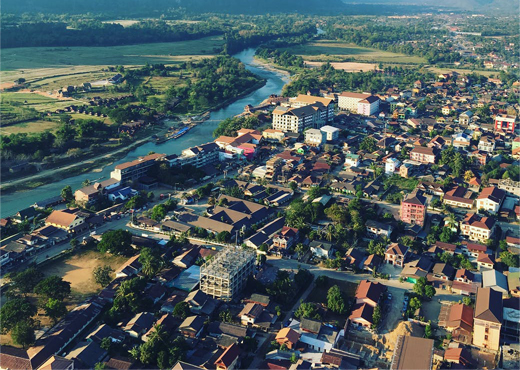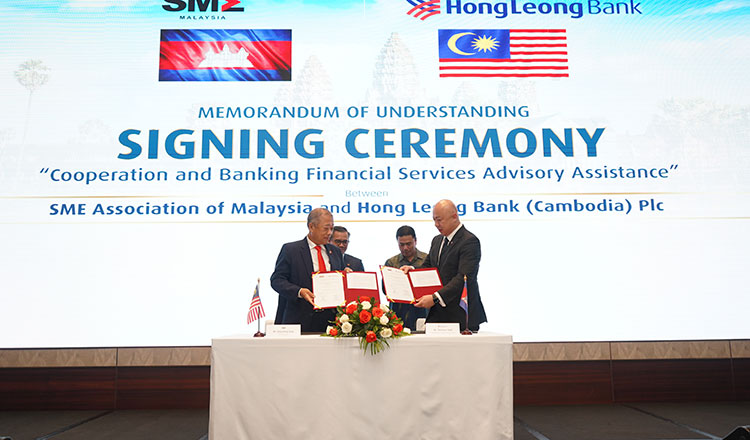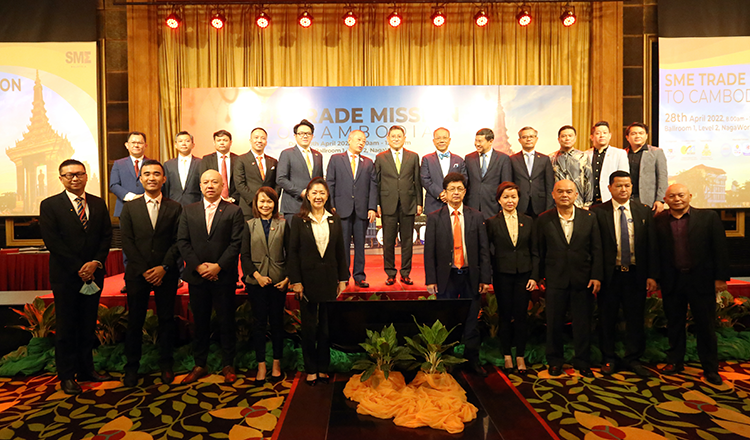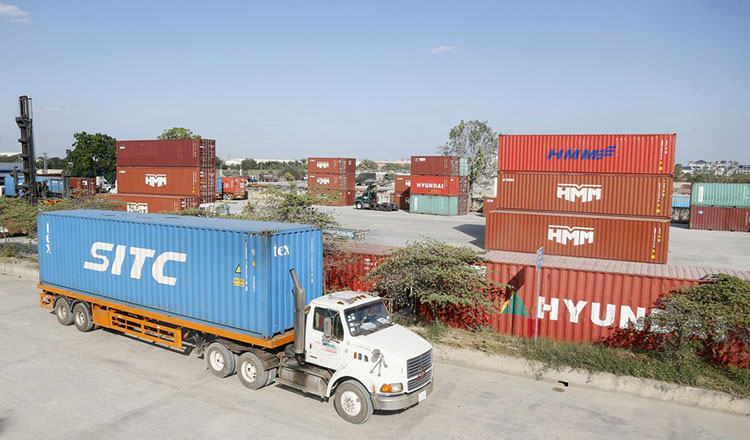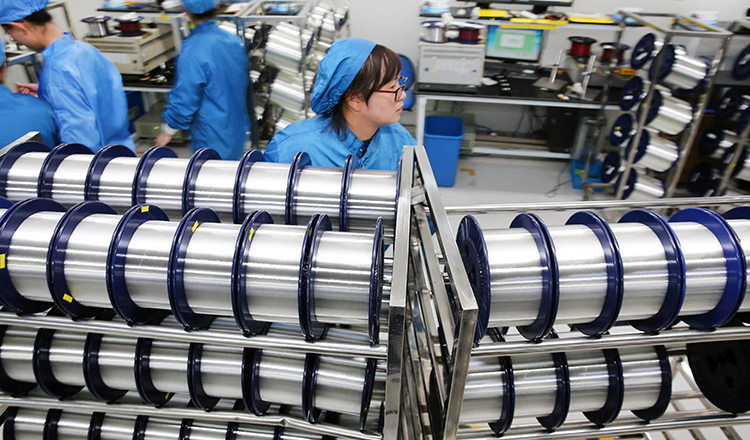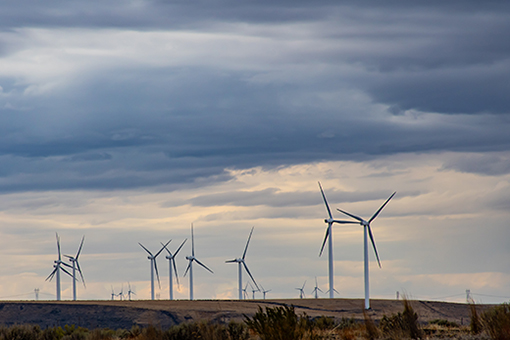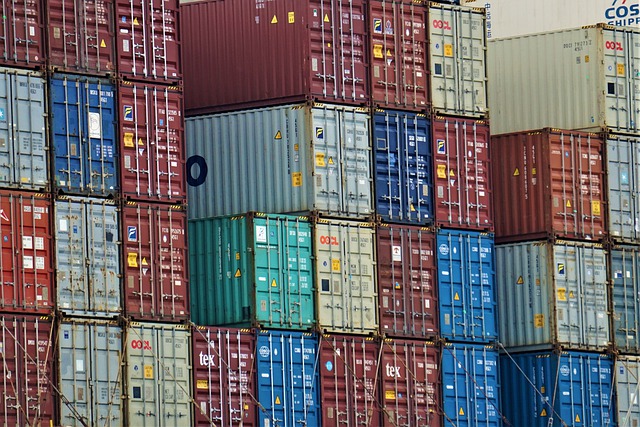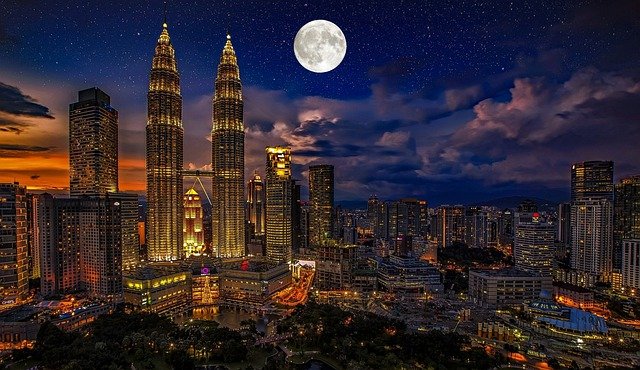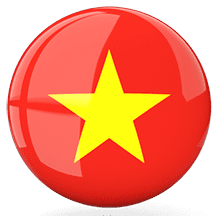The Prime Minister’s Office on Saturday (May 7) issued a notice declaring that borders would reopen.
The reopening of Laos and the lifting of restrictions under Notice No. 627 will come into effect on May 9, Head of the Secretariat of the National Taskforce for Covid-19 Prevention and Control, Mrs Thipphakone Chanthavongsa, told a press conference on Saturday.
Citizens of countries that have not signed visa waiver agreements with Laos can apply for a visa at Lao embassies or consulates in foreign countries. Visitors can also apply for a visa online or on arrival at border crossings where such service is available.
Lao and foreign nationals and stateless people aged 12 and older who have not been fully vaccinated are required to take a Covid-19 ATK test within 48 hours of their departure for Laos. However, they are no longer required to have a Covid test upon arrival. People who have a certificate indicating full Covid vaccination can enter Laos without needing to have a Covid test in either their departing country or upon arrival in Laos.
Visitors who contract Covid-19 during their stay in Laos are responsible for all expenses involved if treatment is needed. Treatment can be obtained at state and private hospitals, while self-isolation and self-care is other options.
Vehicles will be allowed to enter and exit as normal, the same as before the pandemic was declared. The Ministry of Public Works and Transport will issue instructions concerning the changes in this regard.
The government has called on state departments, business operators and all sectors of society to be ready to welcome and offer warm hospitality to tourists.
In addition, the government will allow entertainment venues including karaoke clubs to reopen, on condition that staff and customers comply with standard Covid control measures.
The taskforce will monitor the situation closely and revise virus control measures as needed, Mrs Thipphakone said.
“In the case of any changes (to measures), the government will inform the public,” she said.
Deputy Minister of Health Dr Snong Thongsna told reporters the decision to fully reopen Laos was made in light of the declining number of Covid cases, both worldwide and in Laos.
The average number of new infections reported in Laos each day has plummeted tenfold, from almost 2,000 a day in February and March this year to less than 200 a day at present.
“The rate of infection is declining daily,” Dr Snong said. The Omicron variant is the dominant form of Covid currently circulating in Laos, with a few cases of the Delta variant also being recorded. As of May 7, a total of 208,715 infections had been reported, including 746 Covid-related deaths.
The MoU intends to establish a collaboration to jointly share knowledge and expertise, as well as provide advisory and business matching opportunities aimed at supporting the growth of SMEs in Cambodia. The MoU also aims to facilitate business and investment potentials between Cambodian and Malaysian SMEs.
Terrence Teoh, Managing Director and Chief Executive Officer of HLBCAM signed the MoU with Ding Hong Sing, National President of SME Association of Malaysia during a ceremony at the Hyatt Regency in Phnom Penh. It was witnessed by H.E. Eldeen Husaini, Malaysia Ambassador to Cambodia and H.E. Cheuy Vichet, Cambodia Ambassador to Malaysia.
As a bank that recognises the vital role of SMEs in Cambodia’s economic growth, Teoh reaffirmed HLBCAM’s commitment to supporting SMEs to strengthen their business resiliency during the next phase of the pandemic recovery and help them to rebuild stronger and more sustainably through various trade and investment opportunities. SMEs in Cambodia account for 98 percent of businesses, contributing 73 percent to employment and 58 percent to the gross domestic product (GDP).
While pointing out the significance of the MoU, Teoh said, “With SMEs as a key contributor to Cambodia’s economic growth, we share the same goal as Cambodia to help spur the enterprise spirit and boost economic development. Through this MoU, I believe our joint capabilities and deep insights into both markets can help our Cambodian and Malaysian SME customers navigate mutual business matching opportunities. We are also able to help them connect with a broader range of business and financial solutions, especially in digital innovation to drive business performance and greater sustainability.”
Representing the SMEs community in Malaysia, Ding Hong Sing said that the MoU would open up beneficial opportunities for SMEs from both countries to foster collaboration. “Our common aim is to share industry expertise and know-how through study visits, workshops, and seminars with relevant business partners. By combining forces, we are able to help SMEs realise the full potential and opportunities to be harnessed from the growing Cambodian and Malaysian SME sectors.”
For full article, please read here
Author: Adur Pradeep
Source: Khmer Times
The delegation left to the Ministry of Foreign Affairs and International Cooperation (MFAIC) and was welcomed by Prak Sokhonn, Deputy Prime Minister with warm words about the opportunities that await both nations.
“Now is the right time to re-connect our businesses, it is the right time to re-connect our economies and it is time to explore opportunities as to how we can develop together post covid. This year marks the 65th anniversary of the establishment of our diplomatic relations – so what better way to celebrate this anniversary than to join hands and recover together.”
Despite the bumpy curtailment of Covid-19 pandemic, last year’s trade volume with Malaysia was recorded at $500 million, up 30 percent compared to 2020. As of February, 162 Malaysian investment projects worth $3.2 billion had been approved by the CDC, ranking Malaysia among the top investors of Cambodia in 2022.
After the welcome at the MFAIC, the delegation was taken to see the Royal palace, followed by a trip along the Riverside before departing for dinner. During this time, Chin Chee Seong, national secretary general of the SME Association of Malaysia, told Khmer Times, a bit more about the makeup and intentions of the delegation.
“We brought in three different categories of business: food and beverage manufacturing, construction and travel services. Some of these companies are experiencing a shortage of manpower in Malaysia, and one possible solution we are exploring is to move our factories and processing facilities into new territories. For me, Cambodia is an attractive destination due to the combination of stable politics and sustained growth, in addition to the fact that many Malaysians already abode here – so it feels like we’re close to home.”
For full article, please read here
Author: Josh Down
Source: Khmer Times
Cambodia’s total export to the Regional Comprehensive Economic Partnership (RCEP) member countries amounted to $1.95 billion in the first quarter of 2022, up 11 percent from $1.75 billion over the same period last year, a Ministry of Commerce’s data showed on Thursday.
During the January-March period this year, Cambodia’s top three export destinations are Vietnam, China and Thailand, the data said, adding that the kingdom shipped products worth $759 million to Vietnam, $322 million to China and $318 million to Thailand.
Penn Sovicheat, Cambodian Ministry of Commerce’s undersecretary of state and spokesman, attributed the export growth to the RCEP free trade agreement, which entered into force on January 1, 2022.
“It’s just the start. The RCEP trade deal will give a big boost to our economy in the long term,” he told Xinhua. “Under this mega-pact, Cambodia is projected to see a year’s export growth at 9.4 percent to 18 percent, which will contribute to the national economic growth from 2 percent to 3.8 percent.”
The regional trade pact comprises 15 Asia-Pacific countries including 10 member states of the Association of Southeast Asian Nations (ASEAN) — Brunei, Cambodia, Indonesia, Laos, Malaysia, Myanmar, the Philippines, Singapore, Thailand and Vietnam — and their five trading partners, namely China, Japan, South Korea, Australia and New Zealand.
It will eliminate as much as 90 percent of the tariffs on goods traded between its signatories over the next 20 years.
“For Cambodia, China is a huge market for us, especially for our potential agricultural produce such as rice, bananas, mangoes, and cassava as well as industrial products, and processing goods,” Sovicheat said.
For full article, please read here
Author: Xinhua
Source: Khmer Times
Cambodia has already identified the potential of the electronics sector in exports as well as attracting foreign direct investments into the country.
It has also prepared a roadmap for the sector, highlighting the goals to be achieved in the future. While looking at the various aspects of developing the industry, the roadmap also earmarks the country’s competitive advantages.
“Cambodia has a young and highly cost-competitive workforce ideal for manufacturing various types of electronics components. Sixty-four percent of its 16 million population is under 35 years of age, with minimum wages in the country currently set at $194 per month, which is at least 10-20 percent lower than other major manufacturing hubs in the region,” the Cambodia Electronics Roadmap (Draft) pointed out.
Besides, the adult literacy rates have also improved rapidly from 78 percent in 2008 to 88 percent in 2019, indicating a clear advantage for the country in selecting the workers for the industry. The literacy rate is even higher among the younger generation of workers.
Another major advantage is its workers’ considerable experience in working in the textile and garments industry, catering to the export market.
“Cambodia also has the advantage of hosting a major textile and garments industry, which employs a million workers whose dexterity and work ethic are transferrable to manufacturing micro-components in the electronics sector,” it said.
For full article, please read here
Author: Adur Pradeep
Source: Khmer Times
Laos is committed to further promoting renewable energy and investments in low-carbon sectors to achieve carbon neutrality by 2050.
Strong foreign private investment inflows are expected to support the development and supply of low-carbon electricity and grid connectivity in Laos for export markets, according to the latest report from the Asian Development Bank (ADB).
“Wind farm investments of 1.6 gigawatts are planned, including a 600-megawatt (MW) Monsoon Wind project in Xekong and Attapeu provinces that will export energy to Vietnam,” stated the ADB’s Asian Development Outlook 2022.
These investments are expected to become one of the world’s largest wind farms and provide over 90 million tonnes of carbon saving over their life.
The Lao government plans to increase the share of solar power in its energy mix to almost 25 percent by 2025, from under 1 percent at present.
In July last year, the government and shareholders in the Nam Theun 2 hydropower plant signed a Project Development Agreement to develop Nam Theun 2-Solar, the largest hybrid floating solar project in the world.
With an installed capacity of 240MWp, the solar project will be built on the Nam Theun 2 reservoir in Khammuan province.
In addition, Keppel Electric and Électricité du Laos are putting together a joint venture to import renewable hydropower from Laos as part of Singapore’s Green Plan 2030, according to the ADB.
“Completing 11 additional hydropower projects of state-owned enterprises in 2022 and 2023 with a total installed capacity of 1,820MW will help meet the demand for Laos’ renewable energy in the Southeast Asia region,” the report stated.
Deputy Minister of Energy and Mines Dr Sinava Souphanouvong said Laos has the capacity to produce 10,000-15,000MW of solar power and about 100,000MW of wind power.[read more...]
Source: The star
The quality of the coffee produced in Laos will be demonstrated and promoted to local and international markets through the second Lao Green Coffee Competition and online Auction. The event will take place this month and the winning grower will be announced later next month, according to the Coffee Quality Institute (CQI).
The coffee program is part of a larger, multi-year intergovernmental effort to strengthen Lao PDR’s agricultural sector while promoting economic growth and international trade. CQI is applying its coffee connections and expertise to the coffee project, which is part of the United States Department of Agriculture-funded CLEAN project, being implemented by the nonprofit Winrock International in coordination with the Ministry of Agriculture and Forestry, the Department of Agriculture, and the Laos Coffee Association (LCA).
The inaugural Lao PDR green coffee competition last year saw coffees that scored well into the mid-80s, including both arabica and robusta varieties. This year, an auction component is being made possible through the Arise Plus Laos PDR project, funded by the European Union and implemented by the International Trade Centre.
“The institute anticipates 50 specialty arabica and fine robusta samples this year and wants this competition to shine a spotlight on the coffee produced by Lao farmers. They produce great coffee, but it is almost unknown outside of Laos. It’s time to change that,” Ms Conway said. Director-General of the Department of Agriculture, Mr Bounchan Kombounyasith, said “In line with the Lao Coffee Sector Export Roadmap (2021-2025), this competition supports the development of the coffee sector as a specialty coffee source and will help to ensure that activities sustain quality standards and phytosanitary measures for export to the US, Europe and Asian markets and provide farmers with better incomes.”
Source: ECCIL


